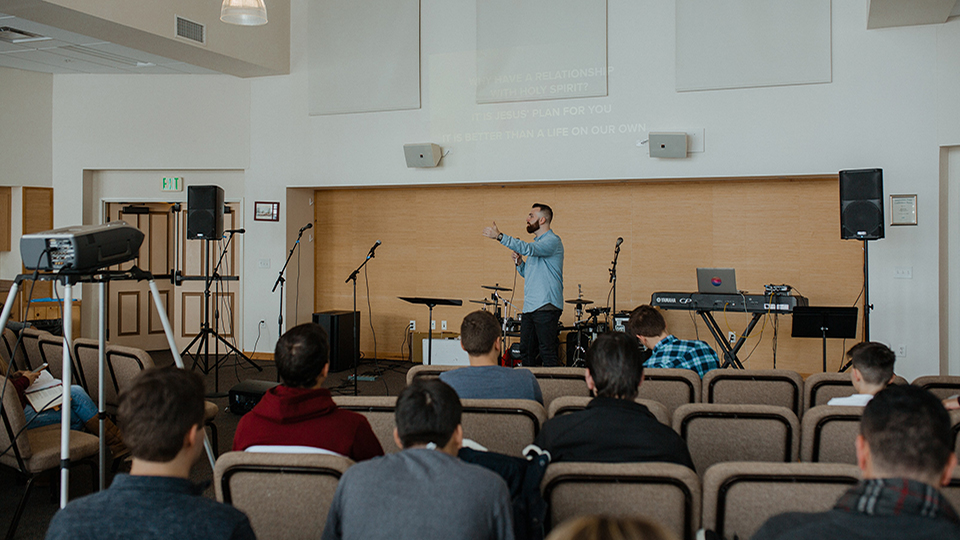
Many preachers understand how to take off, but don’t know how to land. They can introduce a sermon, but they struggle with providing an effective conclusion. In this blog, I am describing three characteristics of an effective conclusion and offer some approaches that you can incorporate into your preaching.
Effective – successful in producing a desired or intended result.
1. Effective conclusions are a surprise.
You don’t announce your conclusion, but instead, you deliver it about a sentence or two before people expect you to. Try to avoid saying things like, “lastly,” “finally” and “in conclusion.” Also, be careful with any nonverbal communication that gives away your intention to end such as closing your bible, putting away your notes, powering off your tablet and always stepping off the stage or taking off your glasses. Communicating too early that you are about to conclude may tempt people to stop listening before you stop talking. Therefore, let your conclusion come as a surprise.
2. Effective conclusions are brief.
Aim for no more than two to four minutes. Remember the purpose of a conclusion is to drive home what the audience should do as a result of having heard the sermon. You do not want to ramble, and you do not want to introduce new material (we often do this if we suddenly remember something we forgot to say earlier in the sermon). Instead, make the conclusion brief and to the point.
3. Effective Conclusions are direct.
This characteristic gets to the heart of what a conclusion should do. One of the questions I ask my preaching classes after we listen to a student’s sermon is “what did that sermon want me to do?” If the class cannot answer that, it is because the conclusion was too vague. To put it another way, if we cannot answer that question, it is because the preacher did not answer the question when preparing the sermon. There should never be any doubts in people’s minds about what the message is calling them to do.
In fact, if you follow the best practices of working with a creative team or reviewing recordings of your sermon to improve, it will be a good idea to get into the habit of listening for the takeaway. What is the sermon requiring? What is the sermon demanding? What will that take away look like in real life? The conclusion should be direct.
Here are some possible conclusions you could employ:
You can summarize the sermon.
This approach is helpful when your points have been giving application throughout the message. In your conclusion, you simply remind them of the application points by summarizing it. For example, if you had an outline over a prayer that said, “1. We are not to Worry About Anything, 2. We are to Pray About Everything, and 3. We can then experience the Peace of Christ”; your conclusion will summarize those points. This type of conclusion is sometimes referred to as a “recap” because you are recapping the application. Also, if you previewed your points in the sermon, it would be a good idea to review them in conclusion.
You can choose to give specific application.
Particularly, this is the case when much of the sermon is providing instruction about a topic or a doctrine. In other words, this would be used if you are explaining and proving ideas in the body of the sermon. It is in the conclusion where you must have specific takeaways and concrete calls to action. If you have been preaching a parable or some other kind of inductive sermon, then the conclusion is where most of the application will occur.
You can anticipate objections.
Anticipating objections is effective both in the application and the conclusion, especially if the call to action is developed in the conclusion. In this type of conclusion, you identify what objections your audience could have about what you have been preaching. What might they find hard to believe? What are some of the competing priorities they possess that could make it difficult for them to act on what the sermon is directing them to do?
You can return to the original idea in your sermon’s introduction.
If there’s a story in your sermon introduction, you could finish it here (that is really important to do if your introductory story was a cliffhanger). The same is true with any problem, question, or need you raised in the introduction. Now that your sermon has addressed the idea you began the sermon with, you can bring it full circle in your conclusion.
You can vision cast.
This is where you paint a picture for the congregation of what it would be like if this message were lived out in the church, in their homes, their places of employment or communities.
I once heard a speech teacher tell her students that the last sentence of a presentation is the most important. Well, let’s be sure the last part of our sermons are effective because we planned them to be surprising, brief and direct.
Want more ThoughtHub content?
Join the 3000+ people who receive our newsletter.
*ThoughtHub is provided by SAGU, a private Christian university offering more than 60 Christ-centered academic programs – associates, bachelor’s and master’s and doctorate degrees in liberal arts and bible and church ministries.



